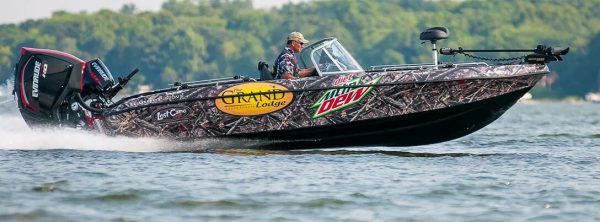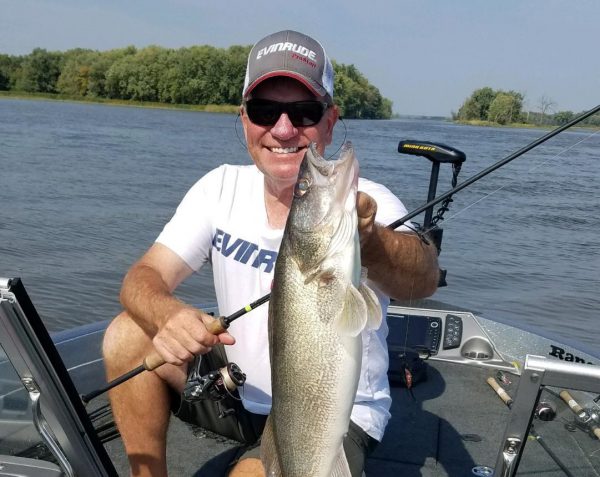Eric Olson: Non-trolling summer walleye techniques
Category: article
May 27th, 2019 by fishing fanatics
Modified May 28th, 2019 at 12:36 AM
Summer walleye fishing is often associated with trolling in open water, but for many, trolling isn’t always something to be pursued. So, for those of you not on the troll, pro angler Eric Olson shared three non-trolling techniques to help you score a few ‘eyes this summer.

Dragging jigs.
“For me, dragging jigs is a technique that’ll work great in the summer,” said Olson. “Fish sand bars or any sandy structure, and either drift or use your trolling motor to drag the jig along the bottom.
“I stick with light jigs, 1/16-to ⅛-ounce are the ideal size. Put half a crawler on the back and just finesse it along. It’s an excellent method to use when the bite gets tough.”
Olson uses a variety of jig head colors such as gold, silver, black, blue, and chartreuse.
Rippin’ Raps.
“I love using Rapala Rippin’ Raps in the summer,” says Olson. “You can cast and retrieve, or you can cast them out, let them sink to the bottom, pop them off the bottom, and repeat. That popping off the bottom can really get some violent strikes from walleyes, or a lot of other species, too.
“You can fish them around weeds, rocks, really any cover.”

Deer Hair Jigs.
“Deer hair is really important in my opinion for a hair jig to work really well,” states Olson. “It has to do with the reflective property of the deer hair under water. Even in darker water, it reflects light in a way that makes it look like it is moving.
“I like the ⅛-to ¼-ounce sizes in colors such as black or purple. Just swimming them with no bait is very effective, but sometimes adding a piece of crawler can really get the bites when fishing slows down.”
Olson uses G. Loomis rods and Shimano reels for these techniques. Spinning tackle for the jigs and casting gear for the Rippin’ Raps.
For all three methods, Eric uses 10-pound Suffix Nanobraid as a main line with a 10-to-12-pound fluorocarbon leader.
One piece of advice Olson has for beginners can work for seasoned walleye hunters too.
“Don’t be afraid to use a heavier jig,” said Olson. “Even though you want to use as light a jig as possible, the heavier jig will allow you to make better contact with cover. It is very important to be able to learn what you are contacting, and sometimes a light weight makes that tough for a new person, or even someone with experience if the wind picks up a bit.”